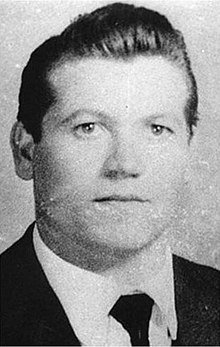2006: Arrest of Mafia Boss Bernardo Provenzano
In a historic event that sent shockwaves through the criminal underworld, Bernardo Provenzano, a notorious mafia boss, was finally apprehended on April 11, 2006, after evading capture for an astonishing 43 years. Provenzano, a prominent figure in the Sicilian Mafia, commonly known as Cosa Nostra, had long been a symbol of the powerful and elusive criminal empire that plagued Italy.
The arrest of Bernardo Provenzano was a significant triumph for Italian law enforcement and a testament to their relentless pursuit of justice. Provenzano’s capture near his hometown of Corleone, Sicily, marked the end of one of the most extensive and enduring manhunts in Italian history. It served as a stark reminder of the ongoing battle against the Mafia’s influence and the unwavering determination to dismantle organized crime networks.
Bernardo Provenzano’s rise to power within the Sicilian Mafia was a testament to his cunning and ruthlessness. Born on January 31, 1933, in Corleone, Provenzano quickly established himself as a key player in the criminal underworld. He gained notoriety for his involvement in various illegal activities, including extortion, drug trafficking, and murder.
Provenzano’s ascent to the position of boss of bosses within Cosa Nostra came after the arrest and subsequent imprisonment of Salvatore Riina, another infamous Mafia figure. Provenzano proved to be an astute and secretive leader, earning him the nickname “The Phantom” due to his ability to evade capture and maintain a low profile.
The Manhunt Begins
Following his ascension to power, Provenzano orchestrated a reign of terror, eliminating rivals and consolidating his control over the criminal empire. His ability to remain hidden from law enforcement for over four decades was a testament to his meticulous planning and the loyalty of those within his inner circle.
The manhunt for Bernardo Provenzano began in earnest in 1963 when he went into hiding after being charged with murder. Italian authorities, determined to bring him to justice, launched an extensive operation to track down the elusive Mafia boss. However, Provenzano’s cunning and the loyalty of his associates made it nearly impossible for law enforcement to apprehend him.
Over the years, Provenzano’s influence within the Mafia grew, and he became a symbol of the organization’s resilience and power. His ability to evade capture for such an extended period only served to enhance his mystique and solidify his position as one of the most feared and respected figures in the criminal underworld.
The End of an Era
After decades of tireless efforts, Italian law enforcement finally closed in on Bernardo Provenzano in 2006. Acting on a tip, police located and arrested him in a farmhouse near his hometown of Corleone. The arrest came as a shock to many, as Provenzano had successfully evaded capture for so long.
The arrest of Bernardo Provenzano was a significant blow to the Sicilian Mafia and a victory for Italian law enforcement. It sent a powerful message that no one, no matter how powerful or elusive, is beyond the reach of justice. Provenzano’s capture marked a turning point in the ongoing battle against organized crime in Italy.
The legacy of Bernardo Provenzano and his reign as the boss of bosses within Cosa Nostra serves as a reminder of the enduring fight against the Mafia’s influence. While his arrest was undoubtedly a significant victory, it also highlighted the need for continued vigilance and the ongoing efforts to dismantle criminal networks.
The arrest of Bernardo Provenzano on April 11, 2006, will forever be etched in Italian history as a momentous event. It serves as a testament to the unwavering determination of law enforcement and the enduring battle against organized crime. The capture of one of the most notorious Mafia bosses sent a clear message that the rule of law will prevail, no matter how long it takes.
For more information on Bernardo Provenzano and the Sicilian Mafia, you can refer to the following external references:
- FBI – Organized Crime
- BBC News – The Capture of Bernardo Provenzano
- History.com – Bernardo Provenzano

